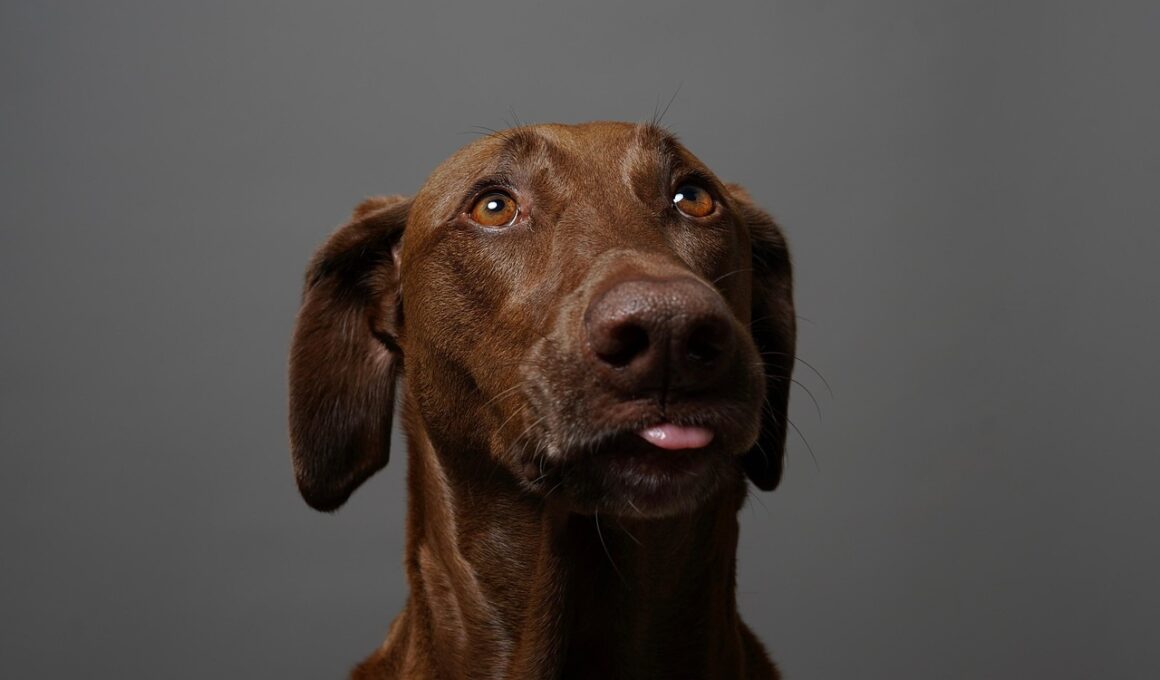Studio vs. Natural Settings: What Works Best for Your Dog Photography Portfolio?
When it comes to building a compelling dog photography portfolio, the choice between studio and natural settings plays a pivotal role in showcasing your abilities. Studio settings offer a controlled environment where lighting, backgrounds, and props can be customized without interruption. This allows for creative experimentation with various elements to accentuate the dog’s unique features. In contrast, natural settings reveal a dog’s personality in a familiar context, capturing candid and authentic moments that resonate deeply with viewers. Each environment has its benefits; thus, understanding the pros and cons of both can inform your photography decisions. Portfolio variety is essential for attracting diverse clients, enhancing your skill set, and developing a unique artistic style. By experimenting in different locations and conditions, you also learn to adjust your techniques to capture stunning images. Additionally, the choice between studio and natural settings influences your overall aesthetic and storytelling ability. Balancing both styles can lead to a diverse portfolio, showcasing the true essence of each dog. Whether you’re drawn to the controlled artistry of a studio or the spontaneous beauty of nature, both can significantly elevate your work.
Capturing dogs in a studio offers a plethora of creative opportunities that are hard to replicate outdoors. In a controlled environment, you choose the lighting, backdrops, and props, allowing tailored setups to enhance the subjects. For instance, seamless backdrops can highlight a dog’s unique coat color and texture, while colorful props can create an interesting narrative. Using professional studio lighting helps you illuminate subjects precisely, reducing shadows and creating captivating effects that flatter the dogs. Additionally, studio conditions minimize distractions, making it easier to focus on the animal’s expressions, as they’re in a more confined area. This environment is particularly advantageous for capturing detailed portraits, where sharp focus on the eyes can reveal depth and character. However, photographers must ensure balance between from forced poses and genuine emotions, as dogs still require comfort within these settings. To get the best of both worlds, try mixing it up by incorporating natural elements in the studio or taking studio techniques outdoors. Experimenting with various angles and compositions further aids in building a strong portfolio that resonates with potential clients and celebrates each dog’s individual personality.
The Allure of Natural Settings
On the other hand, photographing dogs in natural settings allows for spontaneous and genuine expressions that studio settings might not capture. Nature, with its serene and dynamic elements, creates a vibrant backdrop, enhancing the mood and story behind each photograph. Dogs are often more comfortable in their familiar surroundings, allowing them to express themselves authentically. This can result in captivating shots where their personality shines through. Utilizing varying landscapes such as parks, beaches, or woodland paths introduces colors and textures that contextualize the dog’s personality. You can let them interact with their environment, capturing their curiosity or playfulness organically, which adds depth to your portfolio. Moreover, natural light can enhance the image’s warmth, providing an appealing softness that often enhances the emotional quality of photographs. Despite potential challenges such as unpredictable weather or movement, the rewards of candid moments can be worth the effort. Planning specific outdoor shoots can lead to unique and memorable images of dogs. Ultimately, the balance between studio and natural photographs can yield a comprehensive portfolio that illustrates the beauty of dogs in various contexts.
A successful dog photography portfolio should include a blend of both studio and outdoor images to appeal to a wider audience. Clients often seek varied styles, making versatility essential in your work. A series of striking studio portraits, showcasing a dog’s personality alongside vibrant outdoor shots tells a complete story that potential customers appreciate. When constructing your portfolio, think about the themes you want to convey. For instance, pairing an elegant portrait in the studio with an adventurous action shot in nature can demonstrate your skill and creativity. Incorporating diverse breeds in various settings can further enrich your portfolio, highlighting your ability to adapt techniques depending on the dog’s unique characteristics. Customers frequently value photographers who can adjust to different situations, providing assurance that you can capture their pet beautifully. Consider also the consistency of the editing style used in both environments. This adds coherence to your portfolio, making it visually appealing. To market your work effectively, leverage social media to showcase different scenes and styles, inviting potential clients to view your varied skills in dog photography.
Enhancing Your Portfolio with Experimentation
Experimentation is crucial in both studio and natural settings. Trying out various props in the studio can lead to unexpected and delightful results. For example, using colorful balls, hats, or even thematic costumes can help highlight a dog’s playful side, creating light-hearted and engaging images. Simultaneously, outdoor settings offer opportunities for dynamic shots, capturing dogs mid-leap or during playful interactions with their owners. Exploring different times of day impacts your shots as well; the golden hour offers stunning lighting conditions that can beautifully highlight a dog’s fur and surroundings. Furthermore, don’t hesitate to adjust your camera settings based on the environment—experimenting with different focal lengths or apertures can create unique compositions. Mixing wide-angle shots of dogs playing in fields with close-ups of their expressions provides a well-rounded portfolio. Retouching images taken in both environments can unify their overall look and feel. The key is to constantly challenge yourself creatively, pushing past the comfort of standard poses and compositions to discover your distinctive visual story when photographing dogs in varied settings.
A great strategy to enhance your dog photography portfolio is through client feedback and experiences. Engaging with pet owners allows you to understand their visions for the photographs, tailoring your approach to resonate with their expectations. Most clients appreciate a personalized experience, making it essential to communicate effectively to capture the essence of their pets. Consider hosting portfolio sessions with different dog breeds or styles to offer diverse options, showcasing flexible techniques tailored to individual personalities. Experimenting with different breeds can yield unexpected results, highlighting specific traits you can capture. Utilizing social media platforms to share before-and-after editing examples can also demonstrate your versatility. Audiences enjoy seeing the transformation from shooting to final edits. Moreover, sending follow-up surveys post-shoot can provide insights into what clients enjoyed most, allowing you to refine your techniques and expand the range of your portfolio. Offer specialized sessions, such as seasonal themes or event-based photography, to attract new audiences. Such tactics enhance client relationships and showcase your artistic growth as a dog photographer.
The Final Impact of Your Portfolio
In conclusion, striking the right balance between studio and natural settings in your dog photography portfolio is vital for showcasing versatility and depth. Whether opting for controlled studio environments or the beauty of nature, each has unique advantages that enhance the storytelling in your images. Remember that creating a compelling portfolio is not solely about the technicality of photography but also about connecting with the audience emotionally through imagery. For aspiring photographers, both settings present distinct challenges and opportunities, crucial opportunities to hone your skills. Emphasizing the emotional bond between dogs and their owners can elevate your work, leading to stronger engagement from potential clients. Striving for consistent quality throughout your portfolio will ultimately reflect your dedication and passion. In today’s competitive market, ensure that your artistic voice emerges clearly from your work. By recognizing and mastering the strengths of studio and natural environments, you’ll create a captivating dog photography portfolio that attracts new clients and showcases your unique style. Ultimately, continuous practice and learning are vital to sustaining growth in this beautiful and rewarding niche of photography.
For those aiming to build a successful dog photography portfolio, embracing both studio and natural settings is essential to cater to a wide array of clients. Understanding your strengths and interests when navigating these spaces will guide you toward creating evocative images that resonate. The artistic exploration in a studio can yield unique styles, allowing photographers to refine their craft as they experiment with innovative backdrop and lighting combinations. Conversely, natural settings provide rich opportunities that can’t be replicated in a studio, offering a sense of realism that resonates with viewers. Leveraging various environments creates an engaging visual narrative, connecting the audience to the dog’s journey. Regardless of the chosen backdrop, developing patience and creativity during shoots is invaluable. Capturing perfect shots often happens unexpectedly, calling for an alert eye and an understanding of the dog’s behavior. Assess the best times conducive for outdoor shoots to harness magical lighting conditions while also managing the dog’s energy levels. Each photograph taken contributes to the final portfolio, ultimately showcasing diverse breeds and settings that celebrate the beauty of dogs. Balancing these two approaches is the key to building a robust portfolio that attracts potential clients.


